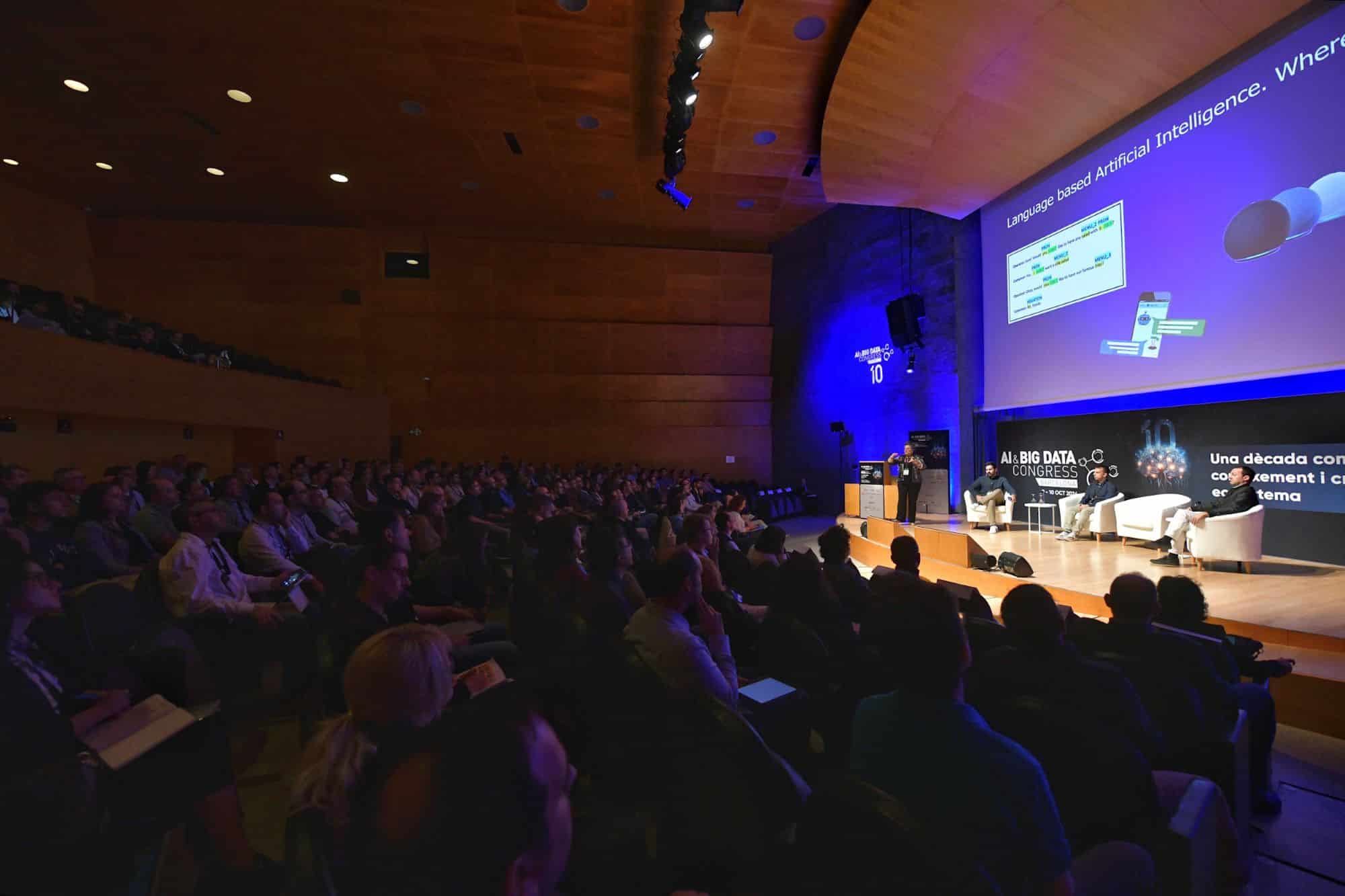During the second day of the AI & Big Data Congress, emphasis has been placed on the capabilities that quantum computing will bring to artificial intelligence systems, being one of the most promising technological trends in the coming years due to its exponential increase in data processing speed.
“In these congress days, and especially today, we have seen examples of analytical AI and generative AI applied to many areas, from educational applications, Earth observation, culture, generation of audiovisual content, and much more, where the impact is real and significantly increases the productivity of the companies that use it,” highlighted Marco Orellana, manager of the Centre of Innovation for Data Tech and Artificial Intelligence (CIDAI), on the tenth anniversary of the congress, where the first steps of integrating quantum computing with artificial intelligence were also presented.
During the second day of the congress on artificial intelligence and Big Data in the business sector, organized by CIDAI and coordinated by the technological center Eurecat within the Catalonia.AI strategy of the Government, technology companies have presented the software they develop to work with this innovative technology with great growth potential to increase the efficiency of artificial intelligence and create new business opportunities.
For example, the company GMV applies quantum AI in Earth observation to identify photovoltaic plants in satellite images or for short-term prediction of wind speed and direction in areas of interest. On the other hand, Multiverse Computing has revealed the use of its products in sectors such as finance, energy, defense, or manufacturing with solutions implemented within the mathematical framework known as Tensor Networks, and Qilimanjaro Quantum Tech has also explained how AI helps optimize quantum computing.
Technologies of artificial intelligence to support company decision-making
Experts in technology in the field of data and artificial intelligence have also addressed the opportunities and challenges of generative artificial intelligence, multimodal models, and solutions to make AI models more explainable, in other words, to facilitate the understanding of the results obtained.
Among these trends, the opportunities of actionable artificial intelligence and Multi-Agent Systems have been shown, enabling decision-making and task execution autonomously, as the purpose, as explained by Xavier Domingo, director of the Applied Artificial Intelligence Unit of Eurecat, is “to find the optimal sequence of actions to carry out for a common goal, rewarding good decisions and penalizing those that are not.”
The congress has presented the application of these and other technologies in various areas, such as a project to improve the operation of drinking water networks developed by the technological water center CETAQUA; an initiative from the Centre of Telecommunications and Information Technologies (CTTI) of the Generalitat, to automate registration tasks through forms applied to the wine sector with a voice assistant, and a solution from the Center for Advanced Studies in Blanes (CEAB-CSIC), for the implementation of a mosquito surveillance and control system.
In addition, several cases have been presented where artificial intelligence supports decision-making in companies and institutions, maximizing the value of the data they have.
In the cultural field, the integration of artificial intelligence and facial recognition has allowed cataloging more than 47,000 photographs from the archive of Teatre Lliure, and also helping the publishing sector to identify new bestsellers for publication and authors to improve their works. In the education sector, it has been shown how the application of generative artificial intelligence can support tasks of creating multimedia content; in the financial sector, how it can help in detecting fraud in digital transactions, and in the industry, how it can contribute to promoting safety at work and logistics.
On the other hand, tools have been presented such as DocSynth from the Computer Vision Center of the Autonomous University of Barcelona for generating high-quality documents, and the application developed by Eurecat that incorporates advanced innovative techniques such as dynamic models of Retrieval-Augmented Generation (RAG) architectures to develop assistants from their own documentary bases.

